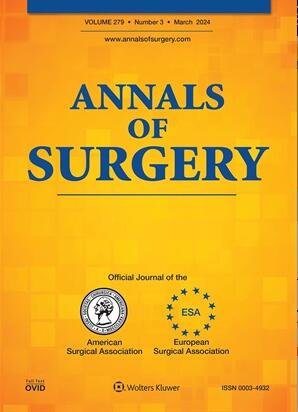使用可解释的机器学习和电子健康记录数据评估非感染性术后并发症的风险调整结果
IF 7.5
1区 医学
Q1 SURGERY
引用次数: 0
摘要
目的比较应用于电子病历(EHR)数据的统计模型预测和识别非感染性术后并发症。这些模型已经发表,是术后感染自动监测(ASPIN)项目的一部分,该项目已扩展到包括非感染性并发症。背景资料总结:15%的非急诊住院患者手术发生术后并发症。大多数术后并发症的报告依赖于手工图表抽象。方法采用美国外科医师学会国家手术质量改进计划(ACS-NSQIP)金标准结局建立的ASPIN模型,对科罗拉多州5家大型医院患者的术前和术后非感染性并发症概率进行估计。观察:预期(O:E)比值通过术后概率之和除以术前概率之和来估计。使用ACS-NSQIP数据比较局部ACS-NSQIP患者、使用EHR数据比较局部ACS-NSQIP患者和使用EHR数据比较研究期间所有手术患者的O:E比值。结果:估计了9例非感染性术后并发症的E比。使用ACS-NSQIP数据与EHR数据比较ACS-NSQIP患者的O:E比值显示,45个比较(5家医院x 9个结局)中有44个(98%)的置信区间重叠,35个(78%)的异常值状态一致。结论使用机器学习对EHR数据估计的风险调整后的术后结果与手工图表审查产生的结果相似。这些模型可用于增加手工图表审查,以指导手术质量的提高。本文章由计算机程序翻译,如有差异,请以英文原文为准。
Estimation of Risk-Adjusted Outcomes for Non-Infectious Postoperative Complications using Interpretable Machine Learning and Electronic Health Record Data.
OBJECTIVE
To compare statistical models applied to electronic health record (EHR) data to predict and identify non-infectious postoperative complications. The models have been published and are part of the Automated Surveillance of Postoperative Infections (ASPIN) project, which has expanded to include non-infectious complications.
SUMMARY OF BACKGROUND DATA
Postoperative complications occur in 15% of nonemergent inpatient surgeries. Most reporting of postoperative complications relies on manual chart abstraction.
METHODS
Preoperative and postoperative probabilities of non-infectious complications for patients from 5 large hospitals in Colorado were estimated using ASPIN models that were developed using the American College of Surgeons National Surgical Quality Improvement Program (ACS-NSQIP) gold standard outcomes. Observed:expected (O:E) ratios were estimated by dividing the sum of the postoperative probabilities by the sum of the preoperative probabilities. O:E ratios were compared between local ACS-NSQIP patients using ACS-NSQIP data, local ACS-NSQIP patients using EHR data, and all patients undergoing operations in the study period using EHR data.
RESULTS
O:E ratios for 9 non-infectious postoperative complications were estimated. Comparison of the O:E ratios of ACS-NSQIP patients using ACS-NSQIP data vs. EHR data showed overlapping confidence intervals in 44 (98%) of 45 comparisons (5 hospitals x 9 outcomes) and agreement in outlier status for 35 (78%).
CONCLUSIONS
Risk-adjusted postoperative outcomes estimated using machine learning on EHR data were similar to those produced by manual chart review. These models could be used to augment manual chart review to guide surgical quality improvement.
求助全文
通过发布文献求助,成功后即可免费获取论文全文。
去求助
来源期刊

Annals of surgery
医学-外科
CiteScore
14.40
自引率
4.40%
发文量
687
审稿时长
4 months
期刊介绍:
The Annals of Surgery is a renowned surgery journal, recognized globally for its extensive scholarly references. It serves as a valuable resource for the international medical community by disseminating knowledge regarding important developments in surgical science and practice. Surgeons regularly turn to the Annals of Surgery to stay updated on innovative practices and techniques. The journal also offers special editorial features such as "Advances in Surgical Technique," offering timely coverage of ongoing clinical issues. Additionally, the journal publishes monthly review articles that address the latest concerns in surgical practice.
 求助内容:
求助内容: 应助结果提醒方式:
应助结果提醒方式:


